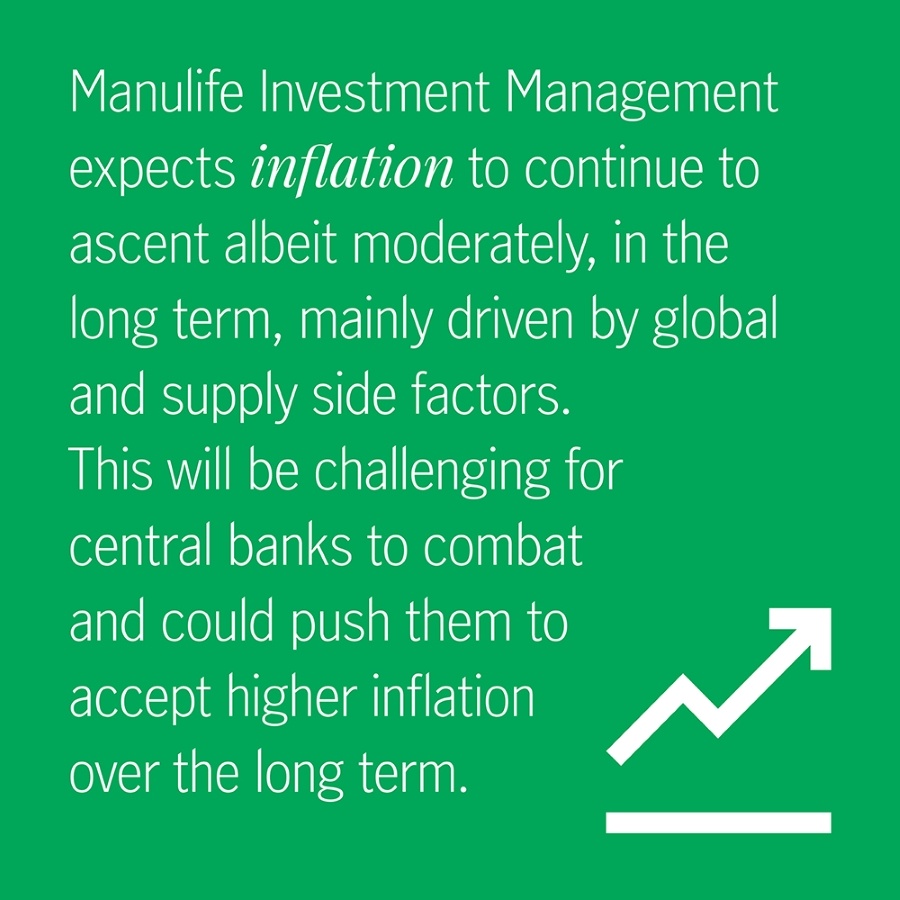Malaysians can expect their retirement income to be less than one-third of current income level
Today, many Malaysians are taking different measures to financially prepare for retirement, through the public mandatory retirement scheme, savings, and separate investments, with the aim of creating a sustainable income stream for their retirement. Research from Manulife Investment Management revealed that, in general, working Malaysians are likely to get a recurring retirement income of less than one-third of their current income when they retire. This is according to the newly launched Manulife Investment Management Retirement Income Forecaster, a proprietary tool that helps people project their anticipated monthly retirement income based on current age, salary, and investable assets, including their public mandatory retirement scheme contributions.
The Retirement Income Forecaster integrates Manulife Investment Management’s proprietary capital market assumptions and leading investment portfolio data with our state-of-the-art mathematical modeling and Monte Carlo simulations, which then produces the expected monthly retirement income that people could achieve with a good level of confidence. Using the Retirement Income Forecaster, four scenarios of working people in Malaysia are examined. Results show that their projected retirement income will be far less than what they are currently earning.
Scenario 1: Early career starter
Age: 32 Monthly income: MYR 7,500 Investable assets: MYR 125,000
Expected monthly retirement income: MYR 2,400
Scenario 2: Mid-career manager
Age: 42 Monthly income: MYR 25,000 Investable assets: MYR 375,000
Expected monthly retirement income: MYR 5,100
Scenario 3: Middle age small business owner
Age: 52 with Monthly income: MYR 25,000 Investable assets: MYR 500,000
Expected monthly retirement income: MYR 3,700
Scenario 4: About to retire
Age: 59 Monthly income: MYR 12,500 Investable assets: MYR 500,000
Expected monthly retirement income: MYR 2,600
Scenario 1: Early career starter
Age: 32
Monthly income: MYR 7,500
Investable assets: MYR 125,000
Expected monthly retirement income: MYR 2,400
Scenario 2: Mid-career manager
Age: 42
Monthly income: MYR 25,000
Investable assets: MYR 375,000
Expected monthly retirement income: MYR 5,100
Scenario 3: Middle age small business owner
Age: 52
Monthly income: MYR 25,000
Investable assets: MYR 500,000
Expected monthly retirement income: MYR 3,700
Scenario 4: About to retire
Age: 59
Monthly income: MYR 12,500
Investable assets: MYR 500,000
Expected monthly retirement income: MYR 2,600

For illustration purposes only.
A separate survey commissioned by Manulife Investment Management found that people in Malaysia expect they need an average of MYR 5,871 per month to maintain a comfortable lifestyle in retirement, which is the same level as their current income.
One of the reasons attributable to the huge retirement income gap between ideal versus reality is Malaysians’ amount of investable assets relative to age and income, which can be a major source in generating the funds they need in retirement. According to the same survey, 68% of Malaysians have less than MYR 200,000 of investable assets. This comes to show there is an imminent need for people to better plan for their financial well-being and an effective way to produce recurring income when they retire.
Macro challenges: Elevated inflation, weaker growth and tighter policy
Inflation has always been the key issue in retirement, and recently markets around the world has seen the detrimental impact it could have on people’s livelihood.


One of the challenges with high inflation is it could heavily discount the purchasing power of an investment portfolio over a longer period. Inflation, coupled with deglobalisation, demographic reversals, higher real interest rates and increased macroeconomic volatility, will create a challenging environment for generating sustainable returns and yields through traditional means.
One way to counter these issues is to consider long-term income-oriented and diversified multi-asset strategies when planning for retirement. This allows people to seek and capture sustainable income from higher yielding assets, as well as benefit from capital appreciation opportunities that may arise across geographies and sectors which can produce real returns on top of inflation.

One of the challenges with high inflation is it could heavily discount the purchasing power of an investment portfolio over a longer period. Inflation, coupled with deglobalization, demographic reversals, higher real interest rates and increased macroeconomic volatility, will create a challenging environment for generating sustainable returns and yields through traditional means.
One way to counter these issues is to consider long-term income-oriented and diversified multi-asset strategies when planning for retirement. This allows people to seek and capture sustainable income from higher yielding assets, as well as benefit from capital appreciation opportunities that may arise across geographies and sectors which can produce real returns on top of inflation.
Find out more about the Retirement Income Forecaster and the macro-economic outlook here.



